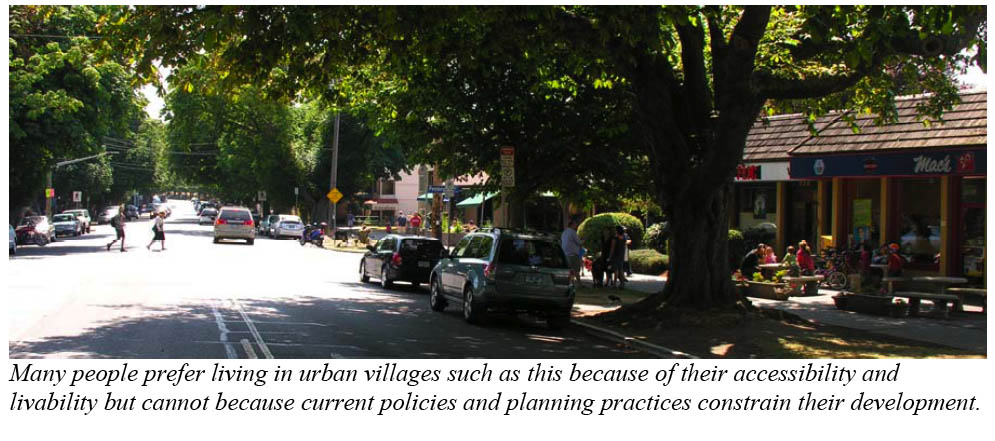Where We Want To Be: Home Location Preferences And Their Implications For Smart Growth
Summary: Smart growth consists of more compact, accessible, multi-modal community development. This can provide numerous benefits to residents who live in such areas and society overall. Critics claim that most consumers dislike this type of community and so are harmed by public policies that encourage it. This analysis suggests otherwise.
Although market surveys indicate that most North American households preferred single-family homes, they also indicate strong and growing consumer preference for smart growth features such as accessibility and modal options (reflected as short commutes and convenient walkability to local services). Twenty years ago less than a third of households preferred smart growth, but this is projected to increase to two thirds of households within two decades.
This reflects various demographic and economic trends, including aging population, rising fuel prices, and increased health and environmental concerns. In addition, suburban lifestyles and automobile travel have become less glamorous. An increasing portion of consumers now aspire to urban lifestyles for at least part of their lifecycle, and the housing market correction in 2008 spoiled confidence in suburban real estate investments. Households are likely to be more rational and cautious in the future.

Described differently, for a few decades consumer housing and transportation decisions seemed to defy basic rules of economics. Housing location decisions seemed insensitive to transportation cost factors such as commute distance and fuel prices, resulting in dispersed housing and automobile-dependent lifestyles. Walking, cycling and public transit were dismissed as inferior and undesirable modes, even where they are efficient and cost effective. Increasing congestion, fuel prices, health and environmental concerns causes consumers to be more rational. Some embrace this opportunity while others react with fear.
This is not to suggest that automobile travel and suburban living will end. Under even aggressive smart growth policies most North Americans will continue to live in single-family houses, although a greater portion will be small-lot, attached housing such as townhouses. However, the demand for new housing is likely to shift dramatically. The current stock of large-lot, single-family houses in exurban locations currently exceeds demand, causing prices to plummet and foreclosures to rise. At best, it will take years for such homes to regain their 2005 market value (in real, inflation-adjusted terms). More likely, consumer demand for such housing will never fully recover.
On the other hand, the market for small-lot, attached housing in accessible, multi-modal communities is strong. Such housing has maintained its value and demand is projected to increase significantly in the future due to structural demographic and economic trends. Communities and developers that respond to these market shifts can succeed. Those that continue past policies are likely to fare poorly.
This is good news overall since more compact, accessible, multi-modal housing can provide many benefits to consumers and society. It gives consumers better options and greater efficiency. Smart growth residents benefit directly from time savings, financial savings, and increased safety and health. Society benefits from infrastructure cost savings, improved opportunity for disadvantaged populations, and improved environmental quality.
Claims that smart growth deprives consumers of preferred housing options are clearly inaccurate. Sprawl housing is now abundantly available at discounted prices, while smart growth housing is scarce in many regions, which drives up prices, making it unaffordable to the lower income households that need it most. Sprawl results, in part, from planning and market distortions that favor dispersed development and automobile travel. There are many reasons to correct these distortions and support smart growth. Such reforms will result in land use development patterns that better reflect consumer preferences.
Sincerely,
Todd Alexander Litman
Victoria Transport Policy Institute (www.vtpi.org)
- Login to post comments